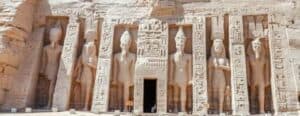Most dreamers keep a dream journal to have a record of what they’ve been dreaming. I’m a collector of dreams, have been for nearly a decade. As a collector of my own dreams I’ve discovered a dream journal can be much more than simply a place to keep your dreams.
What exactly is a dream journal? It’s a handwritten or electric collection of what appeared within a dream. Most dreamers simply chronical the events within a dream but often leave out their feelings, time of day or night, and the impressions that come to mind as the dreamer wakes up.
A dream journal is also a collection of the most common symbols of your dream language, a written library of your dream life, an impetus to remembering forgotten dreams, and a way to honor your dreams.
Getting The Most Out Of Your Dream Journal
Every dreamer knows they need to write out their dream in their dream journal. What most dreamers don’t know is how to record a very long and vivid dream. Few of us have an hour every morning to dedicate to inputting a dream into a dream journal. If you summarize the main points of your dream along with a feeling or two, it can go a long way to jog your dream memory.
The summary can be one or two brief and incomplete sentences. Nothing pretty. Once you’ve got a rundown of what happened, you can go back when you have time and fill in the details.
Most dreams remain in your short term memory for under two minutes before they begin to fade away.
Curt Johnson Dream Interpreter
When you sit down to fill in the details of your dream make sure you include things such as how you felt, time of day, and setting where the dream took place. These may appear to be minor details, but they help to set the context of your dream. The context of a dream goes a long way to letting you know if your dream is positive or negative.
It Takes Some Practice
Since I’ve made a decision to make a daily account of my dreams, I’ve found it quite helpful to carry a small note pad with me. More times than I can count I’ve been sitting at a stoplight when a fragment of what I dreamed comes rushing back to me. Such a revelation is usually set off by something I hear or see. I have to be ready to make a record of those flashbacks. One of those passing memories may be just what you need to unlock the mystery of your dream.
It takes a bit of practice to get the hang of recording your dreams in a dream journal. There will be mornings you wake up and don’t have the time to catalogue an incomplete sentence or two. Life happens. Be as prepared as you can to bring your dream into the waking world if it comes rushing back at an inconvenient time.

An Impetus to Remembering Future Dreams
Dreams have an elusive nature. One minute the details of the dream are vividly clear and after a quick trip to the kitchen for a cup of coffee, many of the details are gone. Evaporated into thin air. One trick I’ve learned over the years is to reviewing your past dreams can be an impetus to remembering forgotten dreams.
That very thing happens to me when I’m researching dreams to write about in this blog. I read through a whole bunch of dreams and like clockwork memories of dream I’d had years ago began coming back to me. At times I’m completely inundated and have to get my dream journal out to make note of them.
If dreamers would simply tweak their meditation habits… they’d have much more recall
Curt Johnson Dream Interpreter
This unintentional flashback of dream memory is caused by activating an ancient principle. The principle is simply this: whatever you pay attention to you make room for. Put another way, if you spend some time reviewing dreams, it’s signal to begin sorting through dreams locked away in the vault of your memory.
Most dreamers wake up after having a dream and immediately plow forward with their busy day. The topic of dreams doesn’t reenter their mind until they awaken on another morning. If dreamers would simply tweak their meditation habits to include dreams, they’d have much more recall.
Now, dreams may only present themselves to you in the form of fragmented pieces of a dream. That’s okay. Simply jot down the symbols involved and move on. At the very least you’ll begin a record of what dream symbols make an appearance in your dreams. When this is done over time you have a dream symbol collection that’s a basis for your dream language.

Identifying Dream Vocabulary
When you scan the pages of your dream journal you’re seeing more that just a collection of dream experiences. You’re seeing the building blocks of your dream language.
It doesn’t matter if you’re looking across weeks, months, or decades of dreams, you have the raw material of your dream language in your possession. That raw material in one word is symbols.
The symbols that appear within your dreams may seem random and ridiculous at times, but they are very intentional. Intentional and purposeful. If you think of dreams as short stories written in code, it makes sense that that code, or dream symbols, appearing in your dreams have meaning assigned to them.
Once you figure out their assigned meanings you’re a long way to figuring out what the individual symbols in your dreams mean.
Tracking Dream Symbols Over Time
A dream journal allows you to go through each of your dreams and take note of which symbols appear most often. For some dreamers it’s vehicles, others seem to dream a lot about family members, or food of some kind. When you’re able to notice which symbols are prevalent within your dreams you can create a list or table right there within your dream journal.
| I saw my own face in 13 dreams/ Means: my identity, appearance | |
| My Subaru appeared in 8 dreams/ Means: career/fun summers as a kid | |
| Snakes in family home 27 times/ Means: lies my family and I believed | |
It’s important to keep in mind symbols can change their meanings. They don’t always mean the same things every time you see them. This is especially true if you have many years worth of dreams between the covers of your journal. I’m sure you’ll be fascinated when you see how your dream symbols change over the unexpected turns your life has taken through the years.
Once assembled dream symbols and their meanings, a quick glance is all it takes to determine what consistent themes have coursed through your dreams over time.

Dream Vault
Having a dream vault comes in handy. You can look at your stash of dreams side by side and see patterns you’d never be able to see if you were reviewing single dreams. One step beyond identifying dream vocabulary, identifying the threads your dreams have in common can lead to a greater understanding.
Dream journals are not written in stone anymore, but they are a permanent record of your dreams. They will be there for you to review for decades to come. This is an invaluable trait.
A new years worth of dreams often introduce new patterns you’ve never seen before. Over the first few years of keeping a dream journal you might find a small number of patterns. But when you review those same years in light of new dreams, you’ll often see patterns you’ve never seen before.
What Dream Journal Should I Choose?
There are lost of good dream journals out there. Take your time and look around. It might take some time for you to find which one works best for you.
I’ve found a collection that gives you a good choice of Dream Journals to start with. I link to it here –> https://wiki.ezvid.com/best-dream-journals
CJ

